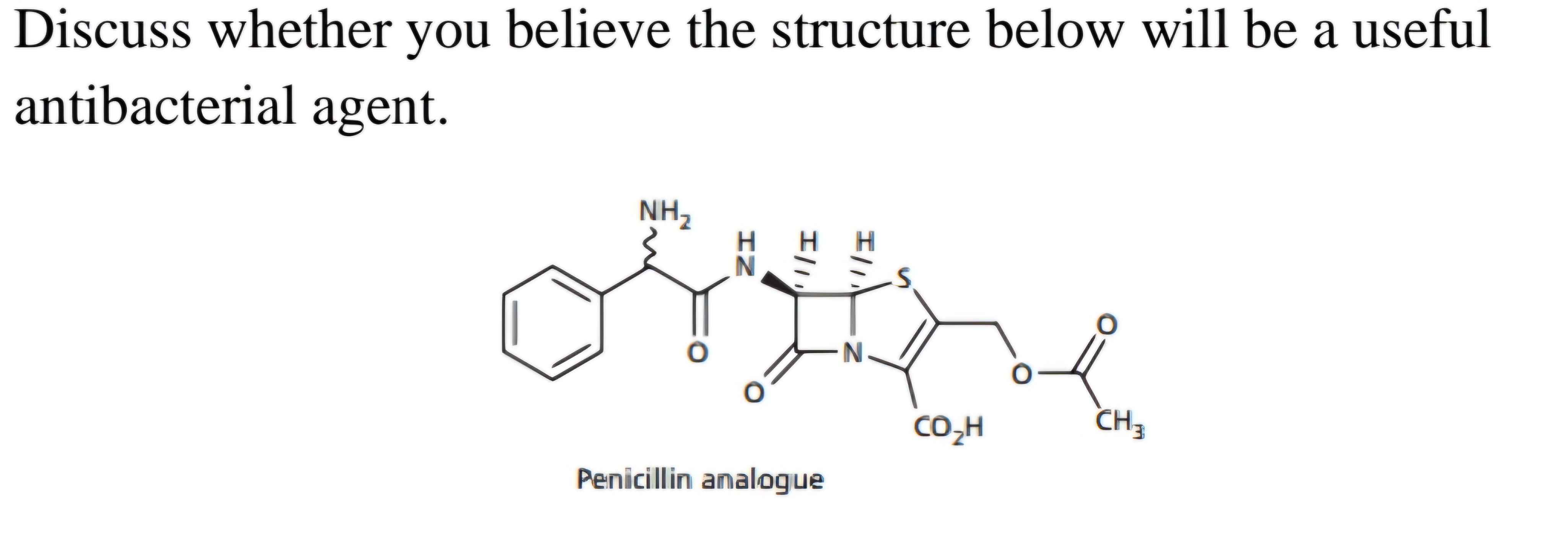Discuss whether you believe the structure below will be a useful antibacterial agent.

Understand the Problem
The question asks for a discussion on the potential antibacterial properties of a penicillin analogue structure depicted in the attached image. It requires an evaluation of its effectiveness as an antibacterial agent based on its chemical structure and properties.
Answer
The penicillin analogue may be useful, inhibiting bacterial cell wall synthesis, but effectiveness needs further testing.
The structure shown is a penicillin analogue, featuring a beta-lactam ring crucial for antibacterial activity. It likely functions by inhibiting bacterial cell wall synthesis, similar to other penicillins. However, effectiveness depends on its resistance to bacterial beta-lactamases and its ability to bind penicillin-binding proteins, which requires further testing.
Answer for screen readers
The structure shown is a penicillin analogue, featuring a beta-lactam ring crucial for antibacterial activity. It likely functions by inhibiting bacterial cell wall synthesis, similar to other penicillins. However, effectiveness depends on its resistance to bacterial beta-lactamases and its ability to bind penicillin-binding proteins, which requires further testing.
More Information
This penicillin analogue, like many antibiotics, aims to disrupt bacterial cell wall synthesis. The key is the beta-lactam ring, critical in antibiotics like penicillin and cephalosporins, making them effective against bacteria but specific enzyme resistance and binding efficiency is crucial.
Tips
A common mistake is to assume all beta-lactam structures are equally effective without considering potential bacterial resistance.
Sources
- Antimicrobial Chemotherapy - Medical Microbiology - NCBI Bookshelf - ncbi.nlm.nih.gov
- Antibiotic - Wikipedia - en.wikipedia.org
AI-generated content may contain errors. Please verify critical information